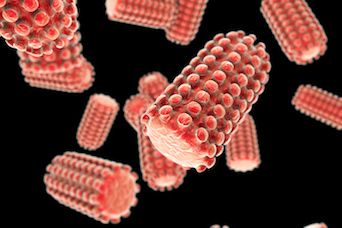CDC Unveils New Rapid Rabies Detection Test
A new rabies test is being touted as faster, more accurate, and easier to use than the current gold standard test.

The Centers for Disease Control and Prevention (CDC) announced that its researchers have developed a test that can more easily and precisely diagnose rabies infections. The new test—designed for use in animals—is being celebrated for its ability to deliver accurate results in as little as 2 hours, allowing doctors to make more informed decisions about who might need treatment.
The CDC’s announcement of the LN34 test was accompanied by pilot study results recently published in PLOS One. This was the largest study ever to validate usage of a real-time polymerase chain reaction (PCR) test to diagnose rabies in animals.
During the study, approximately 3000 brain samples from 60 mammal species—including dogs, raccoons, skunks, foxes, and bats—from areas in the Americas, Europe, Africa, and Asia were assessed. Of the samples, 1000 were known to be infected with rabies virus.
RELATED:
- Study Examines Primary Rabies Immunization in Young Dogs
- New Tool Helps Countries Eliminate Dog-Mediated Rabies
The LN34 test correctly identified all direct fluorescent antibody (DFA)-positive samples as positive. Additionally, the LN34 assay produced definitive findings for 80 samples that the DFA test had determined were inconclusive or untestable, 29 of which were positive for rabies. Of the 3000 samples tested, the LN34 test identified 1 false-negative and 11 false-positive DFA test results. Only 1 sample was indeterminate using both tests.
Together, the authors said, the results demonstrate the “reliability and robustness of the LN34 assay” and support a role for the test in improving rabies diagnostics and surveillance.
To date, the DFA test has been regarded as the gold standard for post-mortem rabies diagnostics and the only internationally-approved test. However, according to the CDC, the DFA, “can only be interpreted by laboratory workers with special skills, extensive training, and a specific type of microscope.” The test can also only be run on fresh brain tissue samples that have been kept cold. As such, it is difficult to use and access in resource-poor areas.
By contrast, researchers found that the LN34 test “was able to detect minuscule amounts of rabies virus genetic material, even in samples so old they had liquefied. Moreover, the condition of the sample did not affect the test’s accuracy.”
The CDC said it is working with the Association of Public Health Laboratories to develop a rabies testing guidance that will help clinicians and laboratory staff decide which tests to run in different scenarios and which tests can be used to confirm rabies, either singly or in combination.
Additionally, the World Health Organization and the World Organization for Animal Health are now considering adding PCR-based tests for primary diagnosis. A favorable ruling would mean the LN34 test could be used in place of the DFA test.
“The LN34 test has the potential to really change the playing field," Crystal Gigante, PhD, a CDC microbiologist and 1 of the study authors, said. “Quickly knowing who needs to receive rabies treatment, and who does not, will save lives and families' livelihoods."
UN, WHO address public health concern over avian flu transmission to humans
April 18th 2024Veterinary professionals working with certain animals are advised to take precautionary steps to minimize risk of infection, while researchers in Texas study potential H5N1 vaccines, antivirals, and antibody therapies for humans
Read More